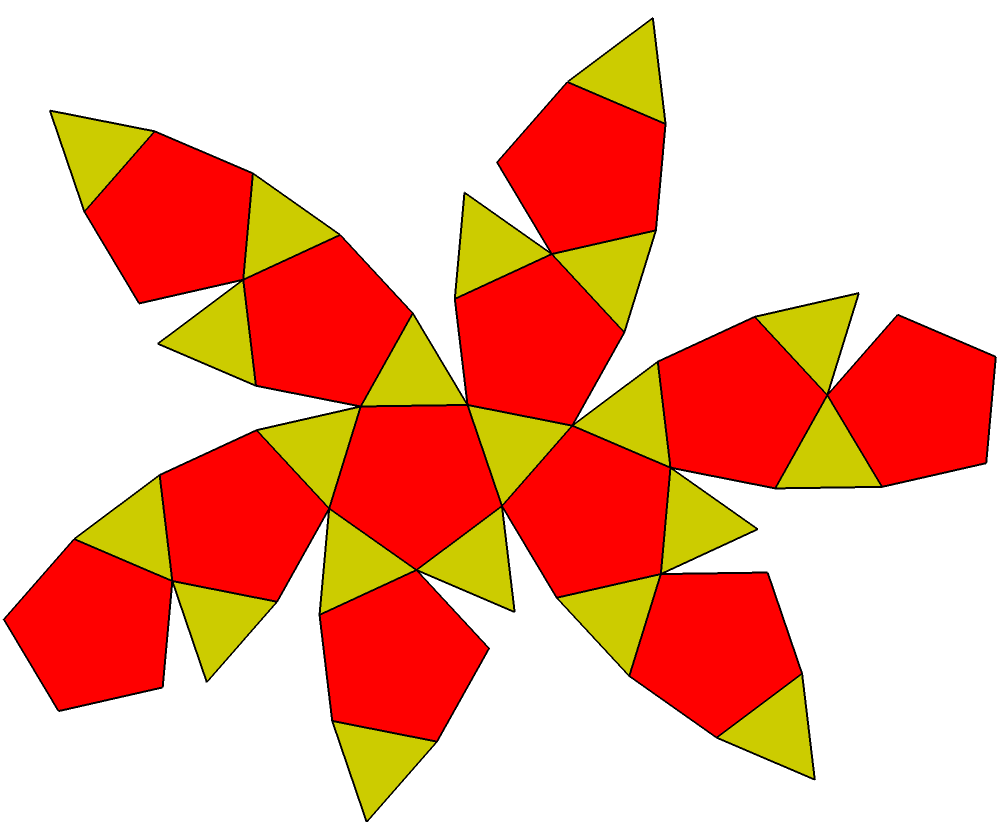Icosidodecahedron
| Icosidodecahedron | |
|---|---|
 Click on picture for large version. Click here for spinning version. | |
| Type | Archimedean |
| Faces | 20 triangles 12 pentagons |
| Edges | 60 |
| Vertices | 30 |
| Vertex configuration | 3,5,3,5 |
| Symmetry group | icosahedral (Ih) |
| Dual polyhedron | rhombic triacontahedron |
| Properties | convex, quasi-regular (vertex/edge uniform) |
An icosidodecahedron is a polyhedron with twenty triangular faces and twelve pentagonal faces. An icosidodecahedron has 30 identical vertices, with two triangles and two pentagons meeting at each, and 60 identical edges, each separating a triangle from a pentagon. As such it is one of the Archimedean solids and more particularly, one of the quasi-regular polyhedra.
An icosidodecahedron has icosahedral symmetry, and its first stellation is the compound of a dodecahedron and its dual icosahedron, with the vertices of the icosahedron located at the midpoints of the edges of either. Canonical coordinates for the vertices of an icosidodecahedron are the cyclic permutations of (0,0,±
Using the standard nomenclature used for the Johnson solids, an icosidodecahedron would be called a Pentagonal gyrobirotunda.
See also
External links
- The Uniform Polyhedra
- Virtual Reality Polyhedra The Encyclopedia of Polyhedra

